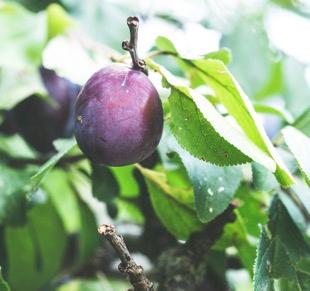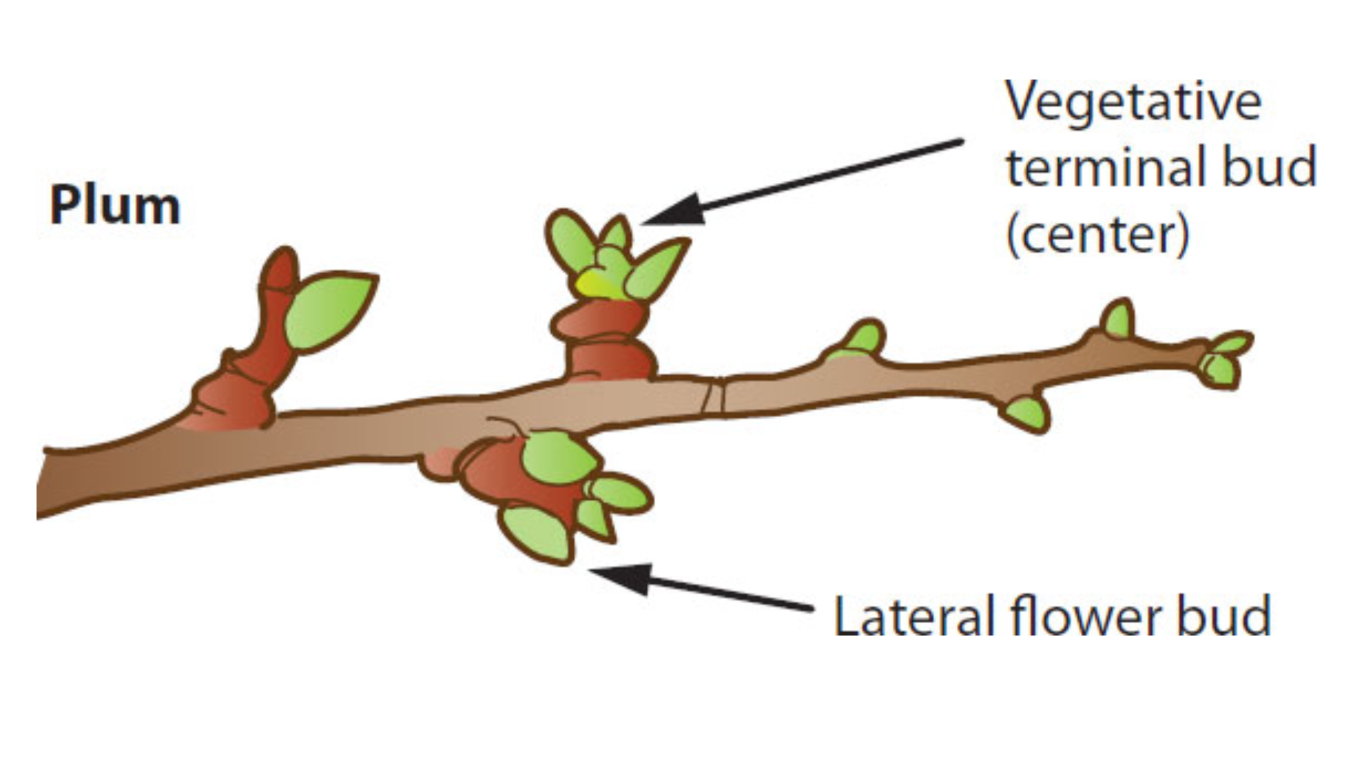Plum
-
Scientific NamePrunus subg. Prunus
-
Special ConsiderationsPlum trees are susceptible to Silver Leaf disease. Infected branches should be removed and placed in the trash. Dispose of the diseased branches in the trash. Do not recycle and do not compost.
 Photo: Markus Spiske/Unsplash
Photo: Markus Spiske/UnsplashPlum trees also are susceptible to gumming (seeping of the sap through the bark). Gumming is not harmful to the plant, but it is a sign of stress. It can be removed or left on the tree.
Plums and prune plums differ only in that prune plums have a greater sugar content. Each type of plum is pruned in the same way.
-
Fruit grows on:
Old wood (spurs). Spurs appear on branches that are two or more years old.
 UC Master Gardeners Handbook
UC Master Gardeners Handbook -
What to Prune in Winter
All Plum Trees:
• Remove dead, diseased or damaged branches.
• Remove crossing branches.
• Goal: Evenly spaced branches that are about 12 inches apart.First Ten Years:
• Head back by two-thirds to three-quarters any long thin branches that will help create the desired funnel shape of the tree.
• Remove long thin branches entirely that do not serve the desired shape of the tree.
• Try to save the branches that have formed fruit spurs.After Ten Years:
• Remove almost all new growth, keeping only what is necessary to fill spaces where a branch has been removed. Leave no stubs.
• Head the new branches that remain by two-thirds to three-quarters.
• Remove old branches that have bent low with the weight of the fruit from previous growing seasons and crowded the branches beneath. Keep an equal amount of new wood to take their place. -
What to Prune in Summer
Reduce the height of tall branches to keep next year’s fruit within reach.
Remove or shorten crossing and crowded branches.
Remove or shorten lateral branches that are growing upright both to keep them from shading other branches and because upright branches tend not to be fruitful.
Shorten laterals that are growing in desired directions to three to five buds or to approximately 10 inches.


